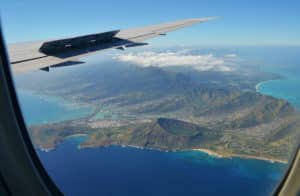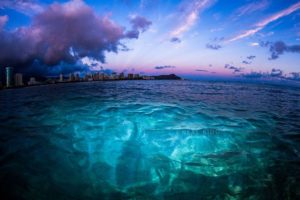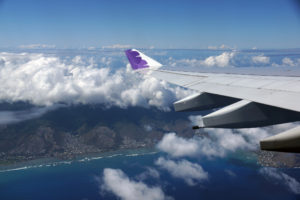Whale Watching Tours
In many parts of the Mainland U.S., winter is categorized by white clumps of water falling slowly and gently from the sky. Here in the Hawaiian Islands, however, the white clumps of water that signify winter are found in splashes and spouts, when between 10,000 and 15,000 Humpback whales arrive in Hawaii for the holidays.
Officially, whale season in Hawaii runs from December 15-May 15, although the first whale of the season is usually spotted sometime in early October. By the week after Thanksgiving, it’s common to find whales off of Maui or Lanai as they breach and leap from the water—with many of the whales that arrive in November being males preparing for the show.
The Whale Season “Show”
That “show,” of course, is the North Pacific Humpback whale mating season that lasts for up to five months, where these 40-ton creatures swim south from Alaska to mate in Hawaii’s warm waters. In total, that journey of nearly 3,000 miles takes six to eight weeks to complete, with Humpbacks attaining an average speed of three to five miles per hour.
By the peak of the season from January-March, thousands of Humpbacks have gathered in Hawaii from Hilo to Hanalei, with the largest concentration of whales residing between Maui, Molokai, and Lanai. If you book a whale watching tour from Maui, experience the thrill of spotting a spout about 300 yards off the bow, and then motoring close for a front row view to the dramatic aquatic performance.
Getting “Mugged” in Hawaii
Because the Humpbacks are protected, however, under the Marine Mammal Protection Act, it’s illegal for vessels to approach the whales any closer than 100 yards. That said, there’s always the hope that the boat will get “mugged” and the whale will decide to swim towards you—potentially ending up inches from your boat or swimming directly underneath.
If you’re lucky enough to get “mugged” in Hawaii, admire the details of the Humpback’s body you can only see from up close—from barnacles growing beneath their fins to tubercles on top of their heads. On average, the North Pacific Humpback whales grow 40-45 feet, with female whales being slightly larger to accommodate nursing their young. Amazingly, after the calves are born here in predator-free Hawaii, they add to their weight by suckling on milk that’s approximately 40% milk fat—thereby gaining about eight pounds per hour as they prepare for the journey back north.
Whale Season Arguably the Best Time to Visit Hawaii
Given the level of activity in the water, whale watching season in Hawaii is arguably one of the most popular times to visit, and if you venture out on the water in winter on a whale watching tour or a kayak, be sure to have your camera ready and a healthy sense of adventure, since a time-stopping breach and a thunderous splash could happen at any moment.
Humpback Whale Facts
- The humpback whale is the fifth largest of the great whales.
- When preparing for a deep dive, humpbacks arch their back and raise their tail flukes above the water. The whale’s arched back appears above the water as it dives. It is this arching that has earned the humpback whale its common name.
- A humpback’s pectoral (side) fins can be up to 15 feet long.
- Adult female humpbacks can be up to 45 feet long; males are generally 42 feet long.
- A mature humpback can weigh up to 40 tons (80,000 lbs).
- Baby humpbacks (calves) are generally 10 to 15 feet long and average 3,000 pounds at birth.
- Humpbacks swim tremendous distances during their migrations: up to 7,000 miles round-trip between their summer feeding areas of the North Pacific and their winter breeding grounds in Hawaii.
- In 1997 the Hawaiian Islands Humpback Whale National Marine Sanctuary was one of 13 national marine sanctuaries created under the U.S. Marine Protection, Research and Sanctuaries Act. This sanctuary supports management, research, education and long-term monitoring for the endangered humpback whale and its winter breeding grounds in the Pacific.
Learn more about Whale Watching
If you’d like more information about whale watching tours and tips like “where to watch whales from land” visit the respective island pages: Oahu, Maui, Kauai and Big Island of Hawaii.








